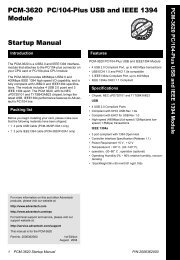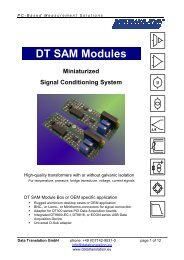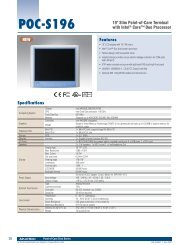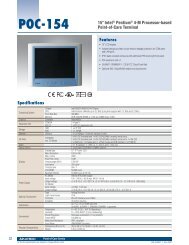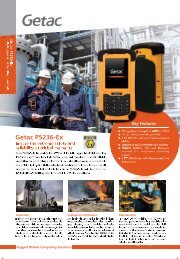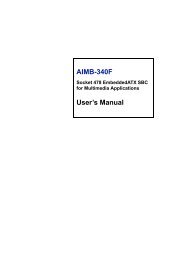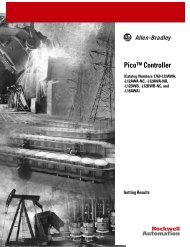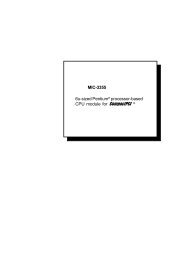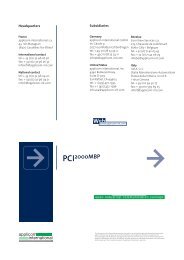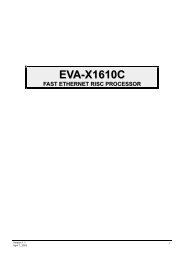1747-6.22, Backup Scanner User Manual
1747-6.22, Backup Scanner User Manual
1747-6.22, Backup Scanner User Manual
You also want an ePaper? Increase the reach of your titles
YUMPU automatically turns print PDFs into web optimized ePapers that Google loves.
Transferring Data over<br />
the High-Speed Serial<br />
Link (HSSL)<br />
Module Control and Status Word 6-93<br />
• RIO Communication: This bit is set when a problem occurs<br />
with the RIO link in the local (bit 4) or remote (bit 12) <strong>1747</strong>-<br />
BSN module. The type of problem that may occur is different for<br />
primary and secondary systems (as shown below). The normal<br />
state of this bit is OFF):<br />
1. Primary mode: the channel is faulted or has<br />
communication errors;<br />
0. Secondary: no communication could be seen by this<br />
module in the RIO link. This indicates that the primary<br />
RIO link is not working or that a problem exists in the<br />
RIO connection to the secondary <strong>1747</strong>-BSN module;<br />
• Processor Fault: This bit is set when one of the processors<br />
(SLC 5/0x), either the local (bit 5) or remote (bit 13), is in failure<br />
or is in Program or Test mode. The normal state of this bit is<br />
OFF;<br />
• Primary/Secondary System: This bit is set when the local (bit<br />
6) or remote (bit 14) system is in the primary mode, otherwise<br />
the system is in the secondary mode. Bits 6 and 14 are never set<br />
at the same time. During power-up or switchover time, these bits<br />
can be clear at the same time. The normal operation is with one<br />
bit set for the primary system and one bit clear for the secondary<br />
system.<br />
Two M0 file words and one M1 file word are used to control the<br />
transfer of data from the primary SLC processor to the secondary<br />
SLC processor. This link should be used to transfer internal processor<br />
data that must be kept current in the secondary processor in the event<br />
that a switchover takes place, making the secondary processor the<br />
primary processor. Actual input data from remote I/O chassis need<br />
not be transferred over this link since the secondary BSN allows the<br />
secondary processor to receive this data from the remote I/O network<br />
in a “listen mode”. Outputs are only controlled by the primary<br />
processor.<br />
The three words used to accomplish data transfer over the HSSL are:<br />
1. M0:s.3410: Data Transfer Control Word (DTCW)<br />
This word is used by the primary processor to initiate the transfer<br />
of data to the primary BSN. This data is ultimately transferred to<br />
the secondary BSN over the HSSL, then to the secondary<br />
processor.<br />
2. M1:s.3410: Data Transfer Status Word (DTSW)<br />
This word is used in both the primary system and the secondary<br />
system to affect the transfer of data on the HSSL.<br />
Publication <strong>1747</strong>-<strong>6.22</strong>




